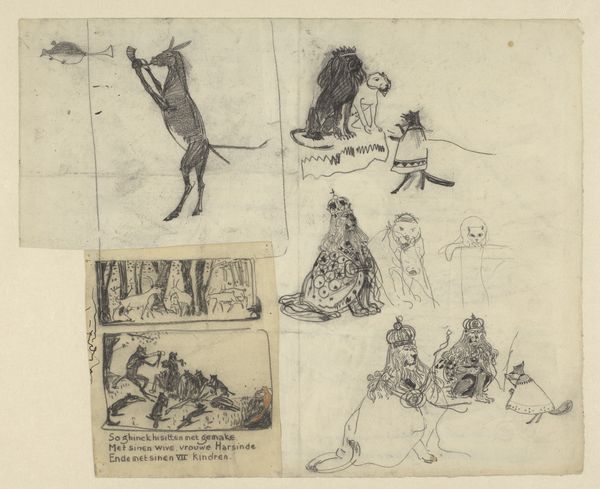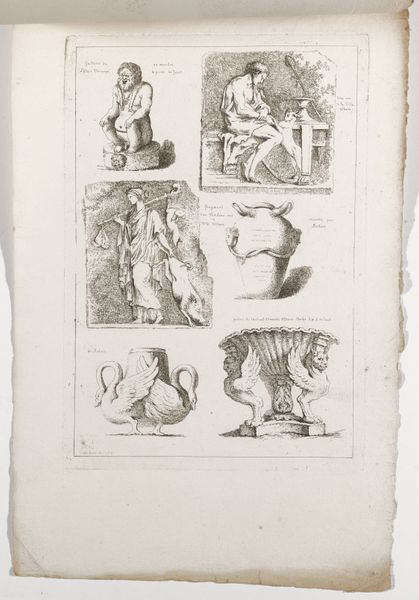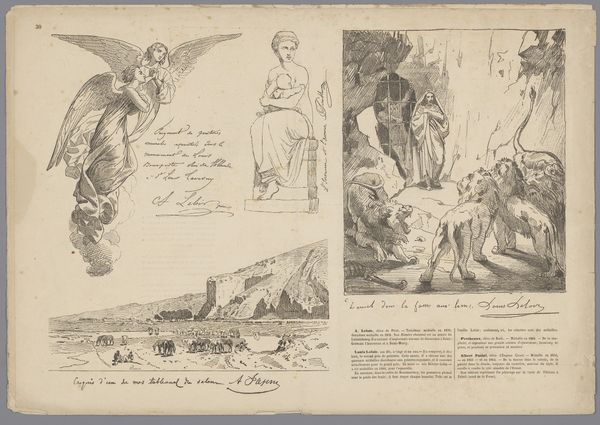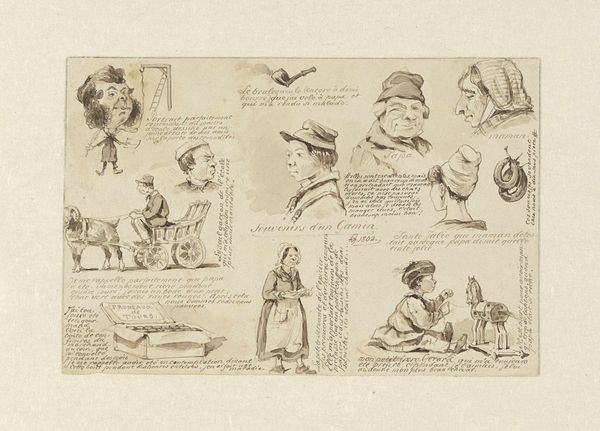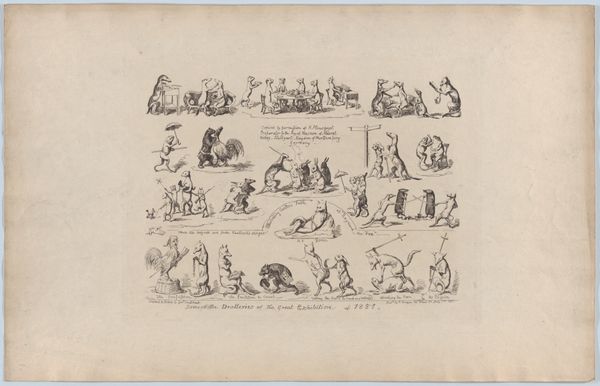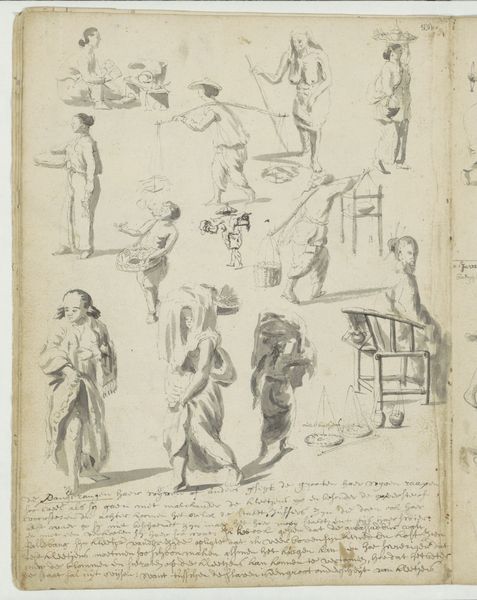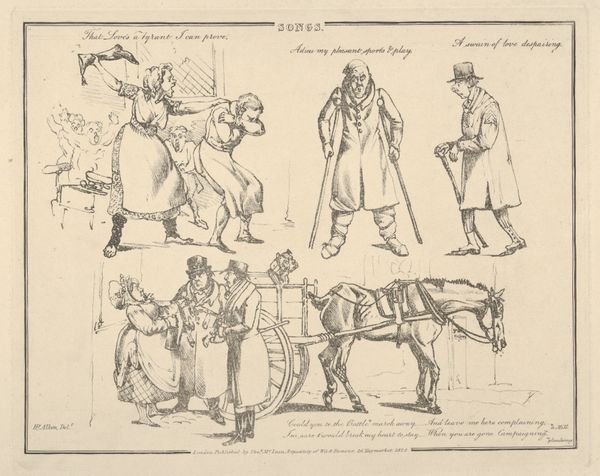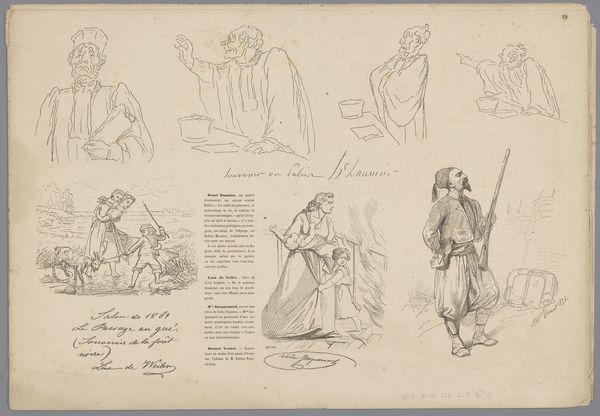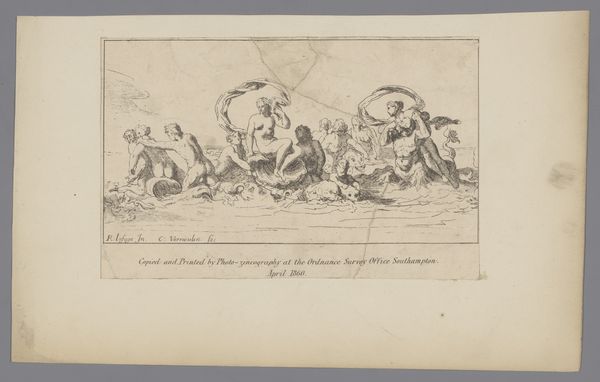
Medailles en cameeën, wasvrouwen, reizend gezelschap te paard en twee vrouwen met kind Possibly 1864 - 1866
0:00
0:00
drawing, paper, ink, pen
#
portrait
#
drawing
#
comic strip sketch
#
mother
#
narrative-art
#
sketch book
#
paper
#
personal sketchbook
#
ink
#
sketchwork
#
ink drawing experimentation
#
sketch
#
pen-ink sketch
#
pen work
#
sketchbook drawing
#
pen
#
history-painting
#
storyboard and sketchbook work
#
academic-art
#
sketchbook art
Dimensions: height 327 mm, width 468 mm
Copyright: Rijks Museum: Open Domain
This is a composite drawing by Firmin Gillot, dating from the mid-19th century, and executed in pen and ink. The graphic quality of the lines, ranging from delicate to bold, is what gives the work its visual power. Note the textures he creates simply through hatching and cross-hatching, particularly in the lower register of the composition. In the upper left section, Gillot has meticulously recorded classical motifs – cameos and medals, rendered with archaeological precision. In stark contrast, other parts of the drawing depict scenes of everyday life: washerwomen at work, and a travelling company on horseback. This juxtaposition tells us something about the artist's sensibility, rooted both in the careful study of historical artifacts, and in the gritty realities of labour and transit. The sheet becomes a kind of inventory, or a mood board, of the artist's world. The drawing reminds us that even the simplest materials, expertly handled, can yield complex and compelling images, breaking down the usual distinctions between high and low culture.
Comments
No comments
Be the first to comment and join the conversation on the ultimate creative platform.

